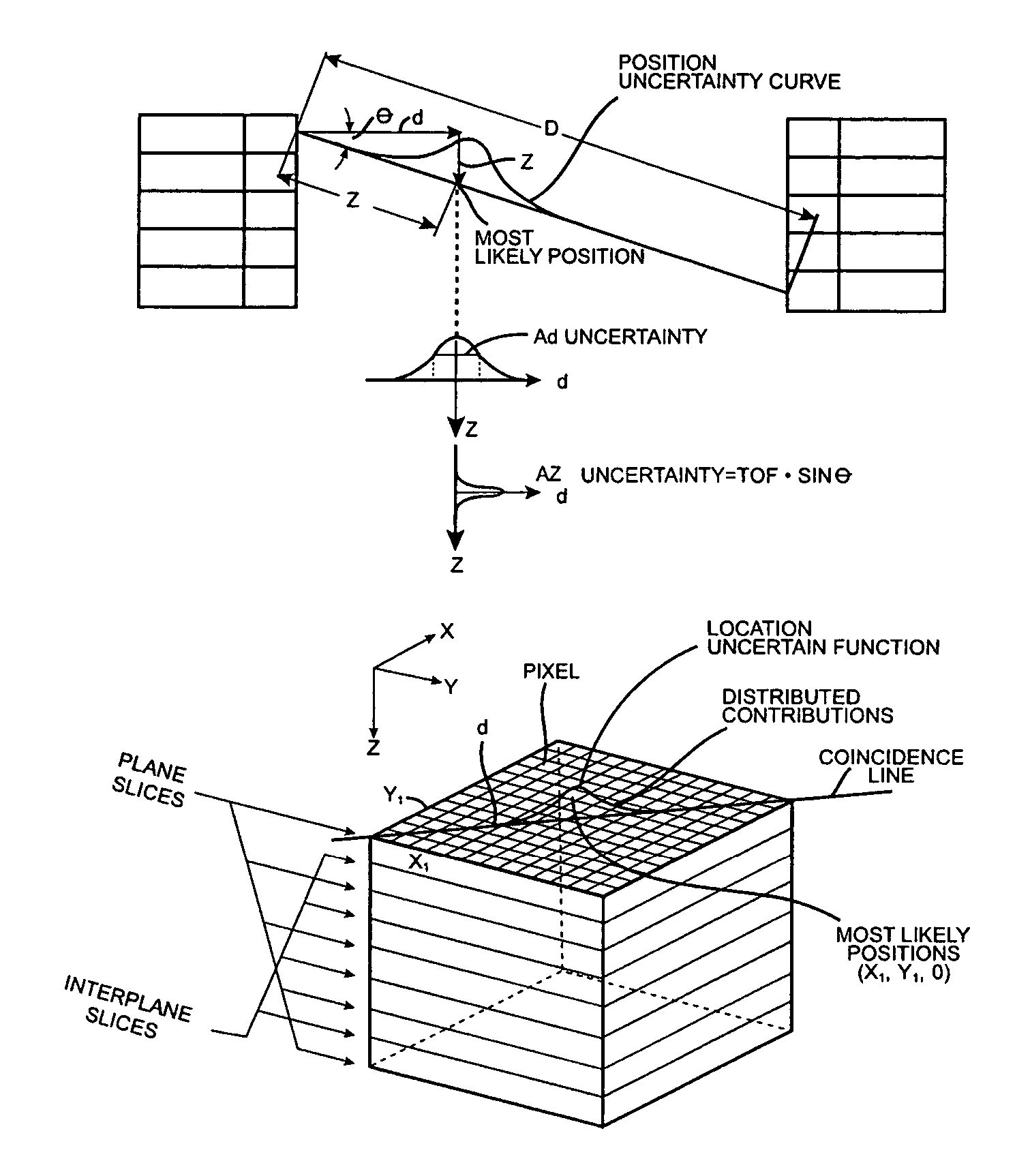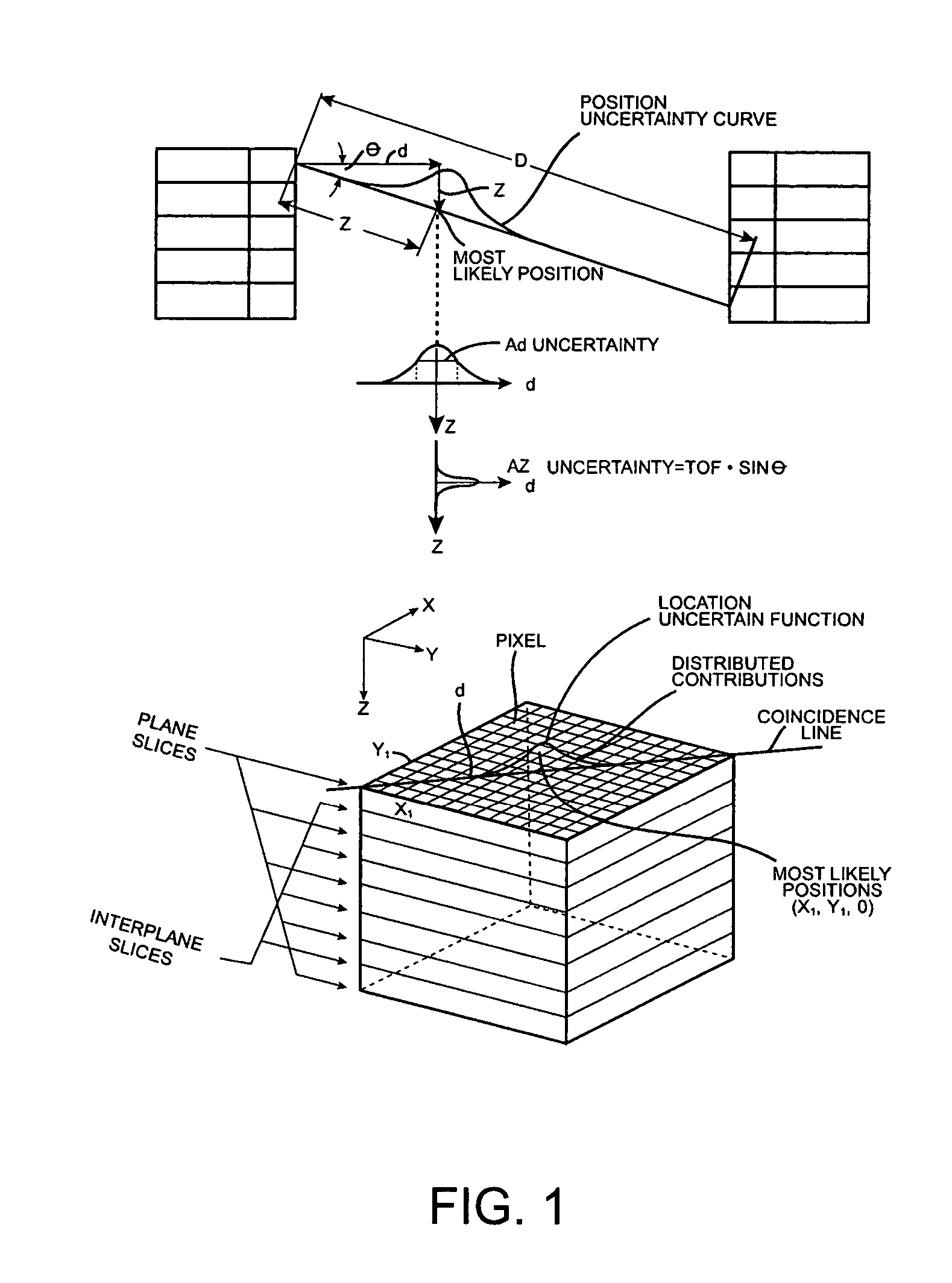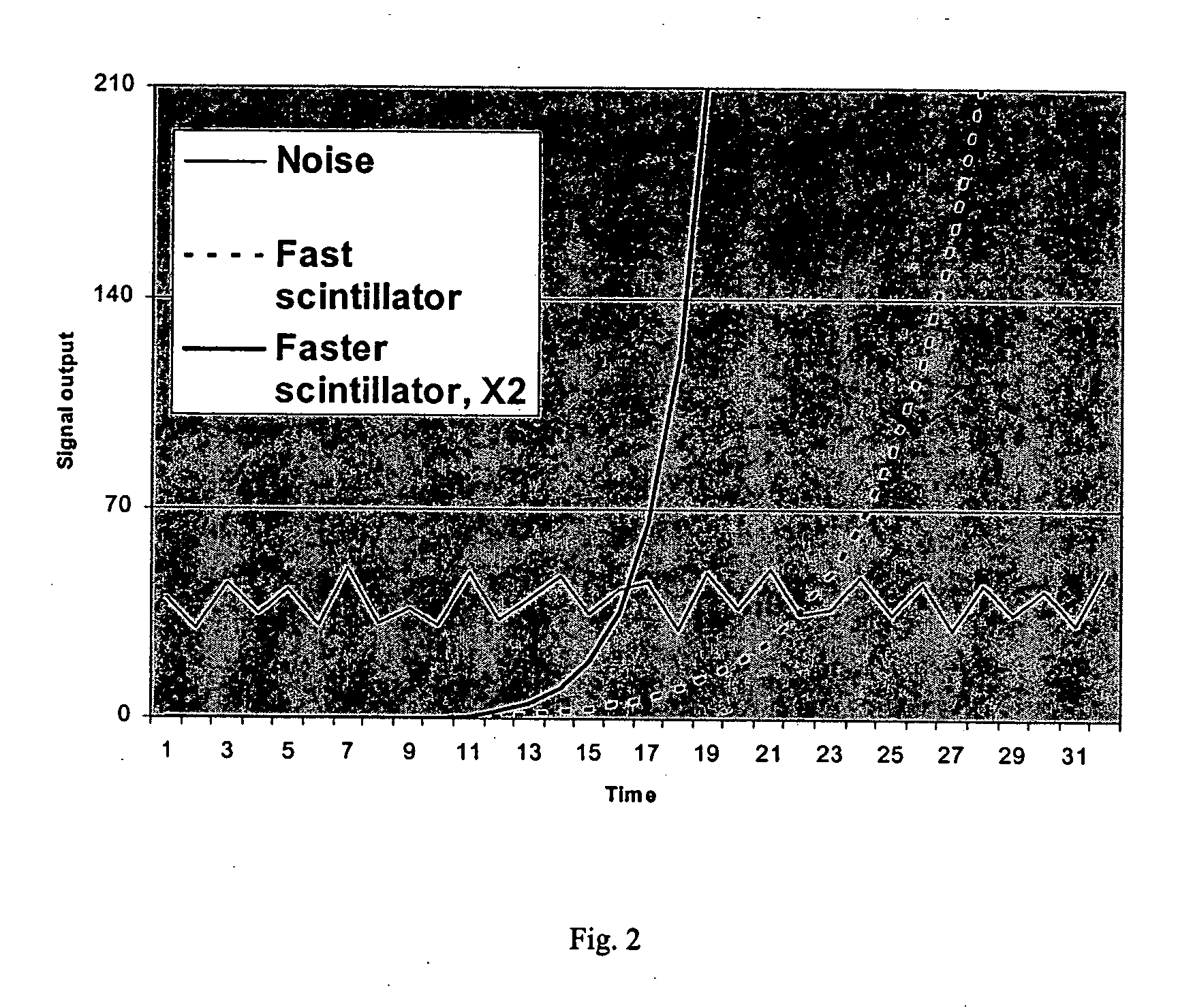Lu1-xI3:Cex - a scintillator for gamma ray spectroscopy and time-of-flight PET
a scintillator and gamma ray spectroscopy technology, applied in the field of scintillators, can solve the problems of a major limitation in the cost of the detector components, and achieve the effect of improving the accuracy of the detector
- Summary
- Abstract
- Description
- Claims
- Application Information
AI Technical Summary
Benefits of technology
Problems solved by technology
Method used
Image
Examples
example 1
LuI3 Crystals, Bridgman Method
[0076] In making crystals, ultra-dry forms of LuI3 and CeI3 were used with 99.99% purity. A two zone Bridgman furnace was used with temperature in the hotter zone above the melting point LuI3 (1050° C.) and that of the cooler zone below the melting point. The amount of CeI3 in the feed material was adjusted to produce LuI3 samples with varying Ce3+ concentration. Most growth runs were performed with 0.5% and 5.0% (on a molar basis) cerium concentration, although runs can also be performed with other Ce3+ concentrations (e.g., 0.1%, 10%, 20%, 30%, 40%, 50%, 60%, and up to or less than 100%). LuI3 crystals as large as ˜1 cm3 were grown using this process. These crystals were cut from the solid ingots to produce small samples (≦0.3 cm3 size) for measurements.
[0077] Scintillation properties of the LuI3 crystals were then measured. For some measurements, packaged samples were used because LuI3:Ce crystals were sensitive to moisture. This involved placing ...
example 2
LuI:Ce, Scintillation Properties
[0078] Characterization of the scintillation properties of LuI3 crystals grown by the Bridgman process involved measurement of the light output, the emission spectrum, and the fluorescent decay time of the crystals. Energy and timing resolution of the LuI3:Ce crystals and their proportionality were also measured. Based on its high atomic number constituents and high density, Lu1-xI3Cex show high gamma ray stopping efficiency. The attenuation length of 511 keV photons in LuI3:Ce was 1.7 cm.
[0079] The emission spectrum of the LuI3:Ce scintillators was measured. The LuI3:Ce samples were excited with radiation from a Philips X-ray tube having a copper target, with power settings of 35 kVp and 15 mA. The scintillation light was passed through a McPherson monochromator and detected by a Hamamatsu R2059 photomultiplier tube with a quartz window.
[0080]FIG. 4 shows the normalized emission spectra for LuI3:Ce samples with a 0.5% Ce concen...
PUM
 Login to View More
Login to View More Abstract
Description
Claims
Application Information
 Login to View More
Login to View More - R&D
- Intellectual Property
- Life Sciences
- Materials
- Tech Scout
- Unparalleled Data Quality
- Higher Quality Content
- 60% Fewer Hallucinations
Browse by: Latest US Patents, China's latest patents, Technical Efficacy Thesaurus, Application Domain, Technology Topic, Popular Technical Reports.
© 2025 PatSnap. All rights reserved.Legal|Privacy policy|Modern Slavery Act Transparency Statement|Sitemap|About US| Contact US: help@patsnap.com



